Does Government Purchasing Science and Technology Public Service Promote Regional S&T Innovation Ability? Evidence from China
Abstract
1. Introduction
- This paper explores the impact and the spatial spillover effect of GPSTPS policy on the regional S&T innovation ability in China. At present, most studies assume that there is no spatial dependence between different regions, which greatly reduces the credibility of the conclusions. The current research adopts the spatial econometric model and explores the influence of GPSTPS policy on regional S&T innovation ability, considering the spatial spillover effect and regional regression differences.
- To investigate the relationship between GPSTPS policy and regional S&T innovation ability, this paper measures GPSTPS policy from the perspective of policy texts. The policy modeling consistency (PMC) index model, a prevailing policy evaluation method, is creatively applied to GPSTPS policy. By constructing a PMC evaluation index system and PMC evaluation model of GPSTPS policy, the quantitative score, which is the PMC score of GPSTPS policy, can be obtained. Taking the evaluation score of GPSTPS policy at each region as the core explanatory variable, this paper constructs a spatial econometric model to empirically analyze the effect of GPSTPS policy on regional S&T innovation ability.
2. Literature Review and Mechanism Analysis
3. Materials and Methods
3.1. Research Design
3.1.1. Spatial Autocorrelation Test
3.1.2. Selection of Spatial Weight Matrix
3.1.3. Construction of Spatial Econometric Model
3.2. Index Selection
3.2.1. Variable Determination
3.2.2. Variable Source
4. Results
4.1. Spatial Autocorrelation Test
4.2. Selection of Spatial Econometric Model
5. Discussion
5.1. Regression Analysis of Spatial Econometric Model
5.2. Subregional Heterogeneity Analysis
5.3. Analysis of Spatial Spillover Effect
6. Conclusions
6.1. Research Conclusions
6.2. Theoretical and Practical Implications
6.3. Limitations and Guidelines for Future Research
Author Contributions
Funding
Informed Consent Statement
Data Availability Statement
Conflicts of Interest
References
- Zhang, H.; Li, K. Research on Government Purchase of Science and Technology Service Model Based on Market Orientation. Sci. Technol. Manag. Res. 2016, 36, 32–36. [Google Scholar]
- Rogers, E.M.; Larsen, J.K. The consensus development process for medical technologies: A cross-cultural comparison of Sweden and the United States. JAMA 1982, 248, 1880–1882. [Google Scholar] [CrossRef] [PubMed]
- Bozeman, B. Technology transfer and public policy: A review of research and theory. Res. Policy 2000, 29, 627–655. [Google Scholar] [CrossRef]
- Li, T.; Ma, J.; Hou, X. A Case Study on the Government Demand-Oriented Scientific and Technical Service Innovation: Based on the Sample of Dongguan Songshan Lake High-tech Zone. Sci. Sci. Manag. ST 2016, 37, 58–66. [Google Scholar]
- Xiao, W. Functional Orientation and Organizational Innovation of Public Service Platform for Small and Medium-Sized Enterprises. Study Explor. 2014, 23, 104–107. [Google Scholar]
- Sterngerg, R. Innovation networks and regional development: Evidence from the European regional innovation survey (ERIS): Theoretical concepts, methodological approach, empirical basis and introduction to the theme issue. Eur. Plan. Stud. 2000, 8, 389–407. [Google Scholar] [CrossRef]
- Boldrini, J.C.; Schieb-Bienfait, N.; Chene, E. Improving SMEs’ guidance within public innovation supports. Eur. Plan. Stud. 2011, 19, 775–793. [Google Scholar] [CrossRef]
- Liu, Q.; Guo, X. Research on Effect of Science and Technology Public Service Efficiency on Regional Innovation Ability: GMM Analysis Based on Provincial Dynamic Panel. Sci. Technol. Manag. Res. 2021, 41, 110–116. [Google Scholar]
- Wang, S.; Yan, P. Research on Evaluation System of Public Science and Technology Service Ability in Hubei Province Based on Factor Analysis. Sci. Technol. Manag. Res. 2015, 35, 58–63. [Google Scholar]
- Ai, B.; Chen, X. The Relationship Between Government Procurement and Independent Innovation. Manag. World 2008, 28, 169–170. [Google Scholar]
- Sun, L. An Empirical Study on the Impact of Government Procurement on the Development of High-Tech Industry in China; Donghua University: Shanghai, China, 2014. [Google Scholar]
- Tian, Y. Research on Government Procurement System to Support Independent Innovative Products; Wuhan University of Technology: Wuhan, China, 2009. [Google Scholar]
- Zhang, Q.; Wang, X. Study on Two Stage Government Procurement Policy to Support Independent Innovation. J. Syst. Manag. 2010, 19, 147–150. [Google Scholar]
- He, J.; Zhang, L. Bottleneck Restraints of Independent Innovation Supplier in Government Procurement. J. Tianjin Norm. Univ. Soc. Sci. 2010, 23, 58–62. [Google Scholar]
- Siemiatycki, M. Implications of Private-Public Partnerships on The Development of Urban Public Transit Infrastructure: The Case of Vancouver. J. Plan. Educ. Res. 2006, 26, 137–151. [Google Scholar] [CrossRef]
- Lember, V.; Kalvet, T.; Kattel, R. Urban Competitiveness and Public Procurement for Innovation. Urban Stud. 2011, 48, 1373–1395. [Google Scholar] [CrossRef]
- Uyarra, E.; Edler, J.; Garcia-Estevez, J. Barriers to innovation through public procurement: A supplier perspective. Technovation 2014, 34, 631–645. [Google Scholar] [CrossRef]
- Liu, Q.; Guo, J.; Xu, N. The Impact of the Quality of Public Science and Technology Services on the Level of Regional Innovation—Analysis of the Threshold Effect Based on Absorptive Capacity. Forum Sci. Technol. China 2021, 5, 77–87. [Google Scholar]
- Zhao, L.; Zhang, Y. Threshold Effects of Social Capital on Regional Innovation Capability from the Institutional Environments Perspective. Sci. Technol. Prog. Policy 2015, 32, 44–48. [Google Scholar]
- Qiu, Y.; Li, Y. On Urban Innovation Ability Influenced by Urbanization: A Case Study of the 28 Cities of the City Clusters Along the Middle Reaches of the Yangtze River. J. Hunan Univ. Sci. Technol. Soc. Sci. Ed. 2017, 20, 52–57. [Google Scholar]
- Zhou, D.; Zhang, H. Spatial-Temporal Dynamics of Regional Innovation Convergence of China. Forum Sci. Technol. China 2015, 24, 11–15. [Google Scholar]
- Li, S.; Zhu, S. Has S&T evaluation effectively promoted regional S&T innovation? A study from the policy-driven perspective. Sci. Res. Manag. 2021, 42, 11–17. [Google Scholar]
- Zhou, W.; Xiang, Y. An Empirical Study on Key Factors of Regional Innovative Capability About China’s Provinces and Cities. Sci. Res. Manag. 2015, 36, 29–35. [Google Scholar]
- Huang, D.; Yang, C. Study on the Convergence of Regional Innovation Capacity Based on Spatial Effect. Soft Sci. 2017, 31, 44–48. [Google Scholar]
- Estradama, R. Policy Modeling: Definition, Classification and Evaluation. J. Policy Model. 2011, 33, 523–536. [Google Scholar] [CrossRef]
- Zhang, Y.; Gen, Z. The Quantitative Evaluation of Regional Science and Technology Innovation Policy: Based on the index of PMC Model. Sci. Technol. Manag. Res. 2015, 25, 26–37. [Google Scholar]
- Mao, Z.; Mei, H. Analysis of Domestic and Foreign Policies in Artificial Intelligence from the Perspective of Policy Instruments. J. Intell. 2020, 39, 74–81. [Google Scholar]
- Zhang, Y.; Zhou, Y. Policy Instrument Mining and Quantitative Evaluation of New Energy Vehicles Subsidies. China Popul. Resour. Environ. 2017, 27, 188–197. [Google Scholar]
- Dong, J.; Quan, Y.; Lijun, Y.; Xiuting, L. Research on Quantitative Evaluation of Single Real Estate Policy Based on PMC Index Model—Taking China’s Housing Rental Policy Since the 13th Five-Year Plan as an Example. Manag. Rev. 2020, 32, 3–13. [Google Scholar]
- Shi, T.; Yang, S.; Chunxi, W.; Wenjun, T. Quantitative Evaluation of The Transformation Policy of Scientific and Technological Achievements-Based on PMC Index Model. Sci. Manag. Res. 2020, 38, 29–33. [Google Scholar]
- Wang, J.; Yang, Q.; Zhang, Y. Quantitative Evaluation of Civil-Military Integration Policy Based on PMC-AE Index Model. J. Intell. 2019, 38, 66–73. [Google Scholar]
- Zeng, C.; Liu, Q.; Zhang, Y. Coordination Between Sci-Tech Input and Level of Regional Economic Development. Sci. Res. Manag. 2013, 34, 203–210. [Google Scholar]
- Zhou, M.; Shen, W. Research on the Mechanism of R&D Investment on Regional Innovation Capacity: Based on Empirical Evidence of Intellectual Property Protection Intensity. Sci. Sci. Manag. ST 2018, 39, 26–39. [Google Scholar]
- Zhu, Y.; Wang, W. Environmental Regulation, Opening Up and Independent Innovation: An Empirical Study Based on Inter Provincial Dynamic Panel Data. Inq. Econ. Issues 2015, 10, 33–44. [Google Scholar]
- Cao, X.; Yu, J. Research on Regional R&D Innovation Efficiency in Chinese Provinces with the Perspective of Innovation Driven: Based on Projection Pursuit and Stochastic Frontier Analysis Model. Sci. Sci. Manag. ST 2015, 36, 124–132. [Google Scholar]
- Zhao, Z.; Zhou, J.; Shen, N. An Empirical Study on The Impact of Financial Development and Regional Innovation Efficiency: Based on The Mediation Effect of Opening Degree. Stud. Sci. Sci. 2016, 34, 1408–1416. [Google Scholar]
- Gao, L.; Ma, J. Innovation, Upgrading of Labor Factors and Regional Economic Growth. J. Southwest Minzu Univ. Humanit. Soc. Sci. 2019, 40, 95–101. [Google Scholar]
- Qiu, Y. Technological Innovation Effect of Urbanization: An Empirical Study Based on China’s Regional Panel Data from 1990 to 2010. Chin. J. Popul. Sci. 2013, 21, 26–35. [Google Scholar]
- Hatipoglu, O. The relationship between inequality and innovative activity: A chumpeterian theory and evidence from cross-country data. Scott. J. Political Econ. 2012, 59, 224–248. [Google Scholar] [CrossRef]
- Zeng, J.; Zhou, D. Regional Characteristics, Industrial Structure, and the Performance of Urban Innovation—Based on a Quasi-natural Experiment on Innovative City Pilots. China Public Adm. Rev. 2019, 1, 66–97. [Google Scholar]
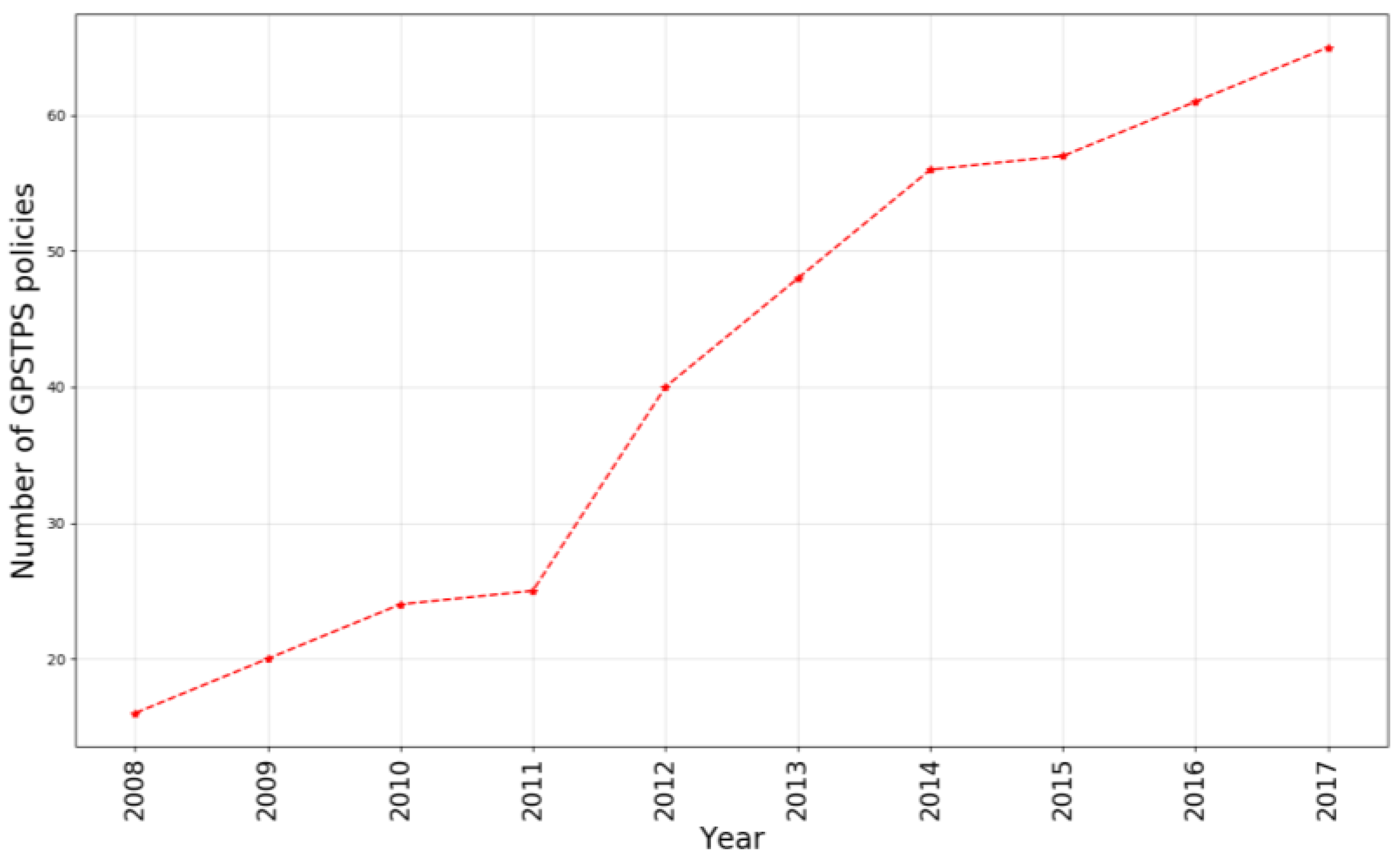
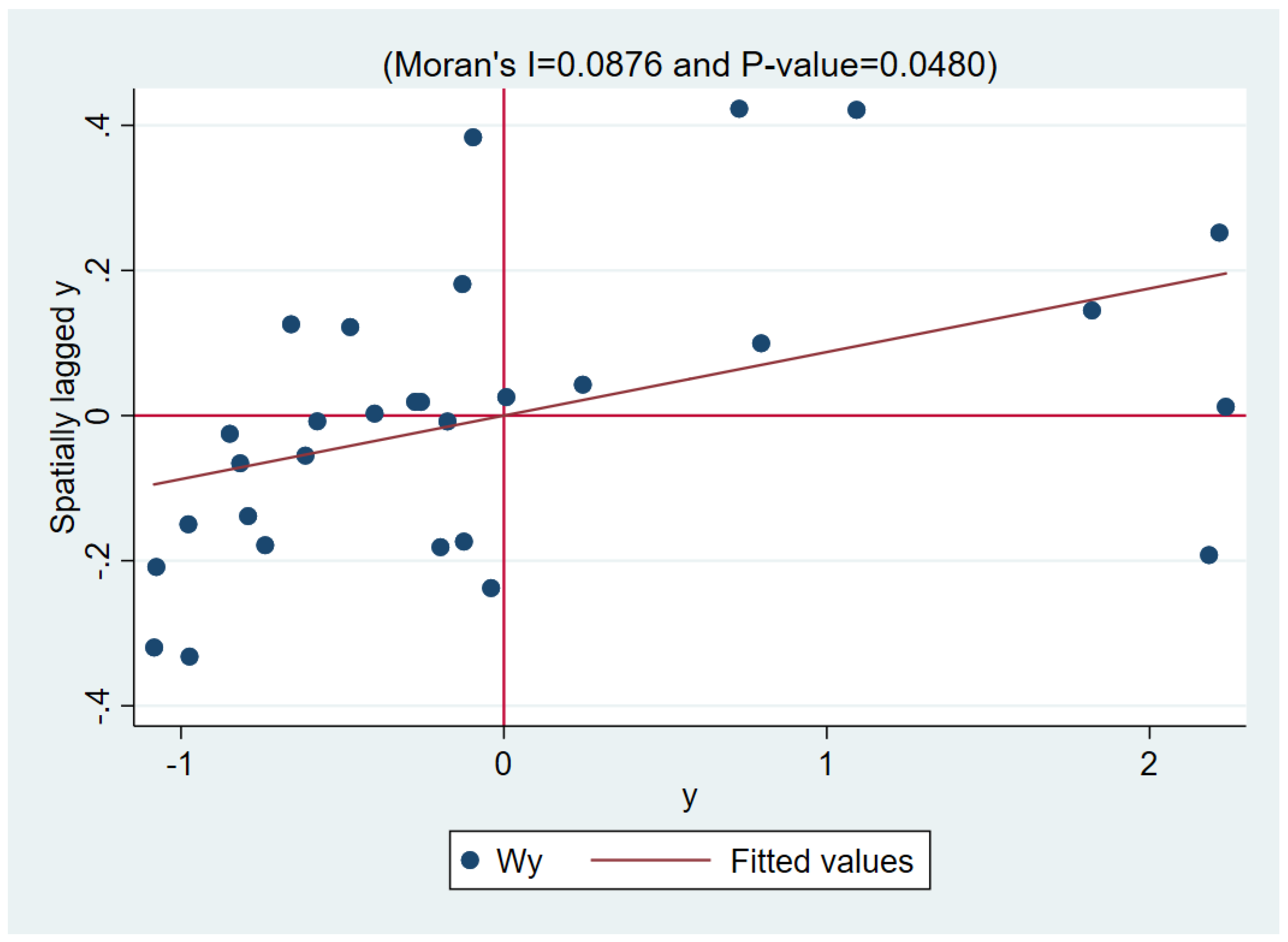
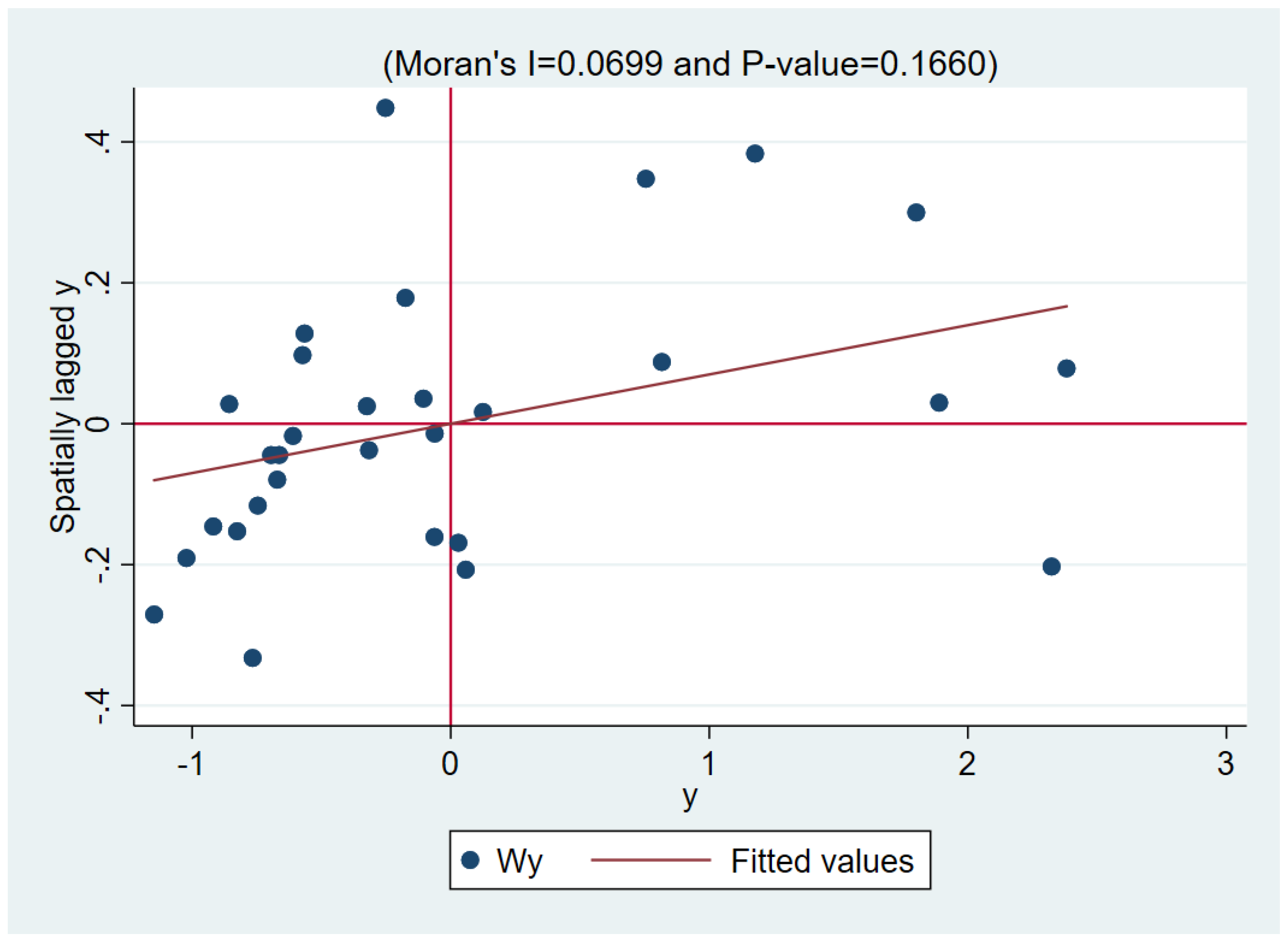
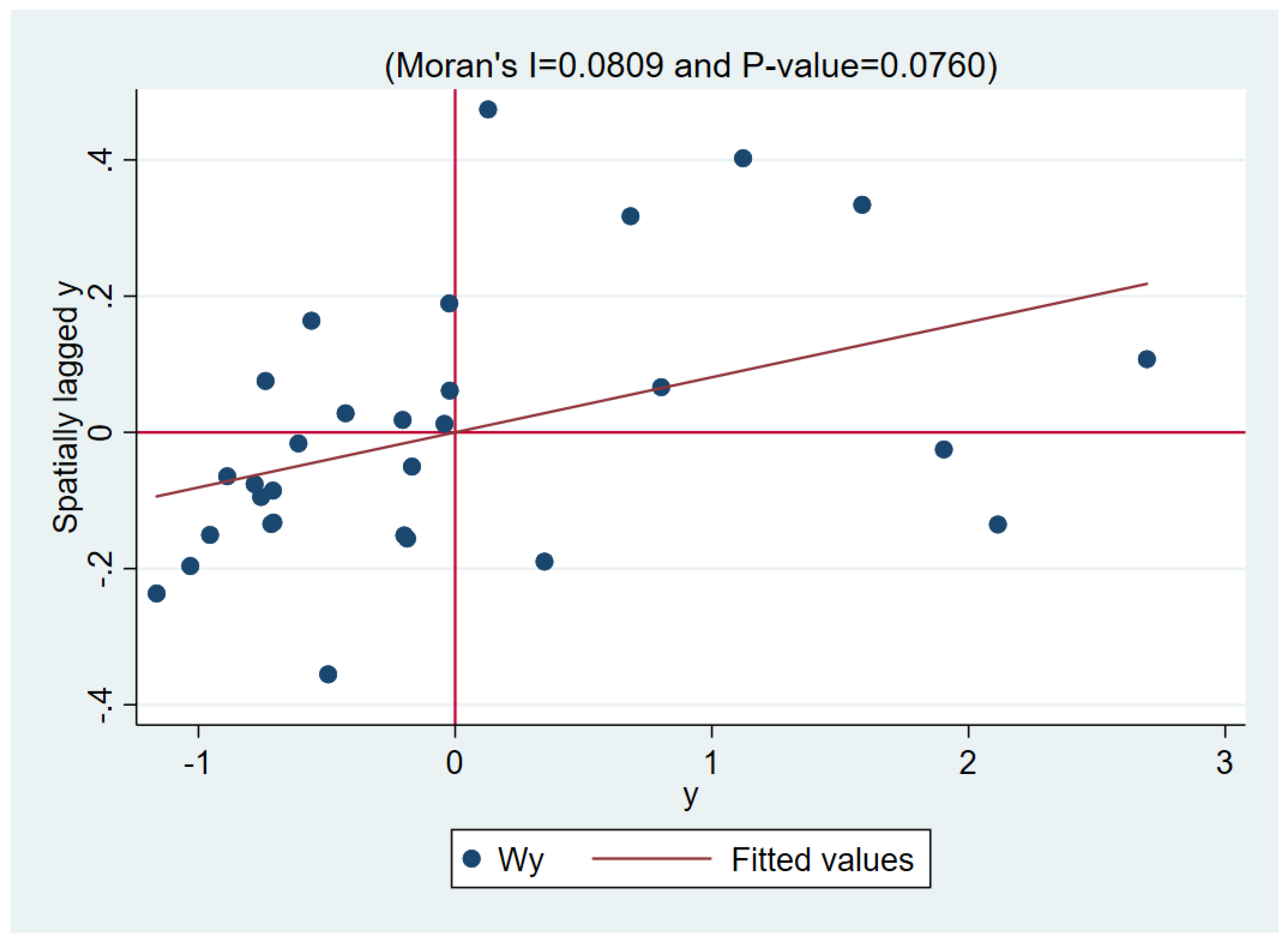
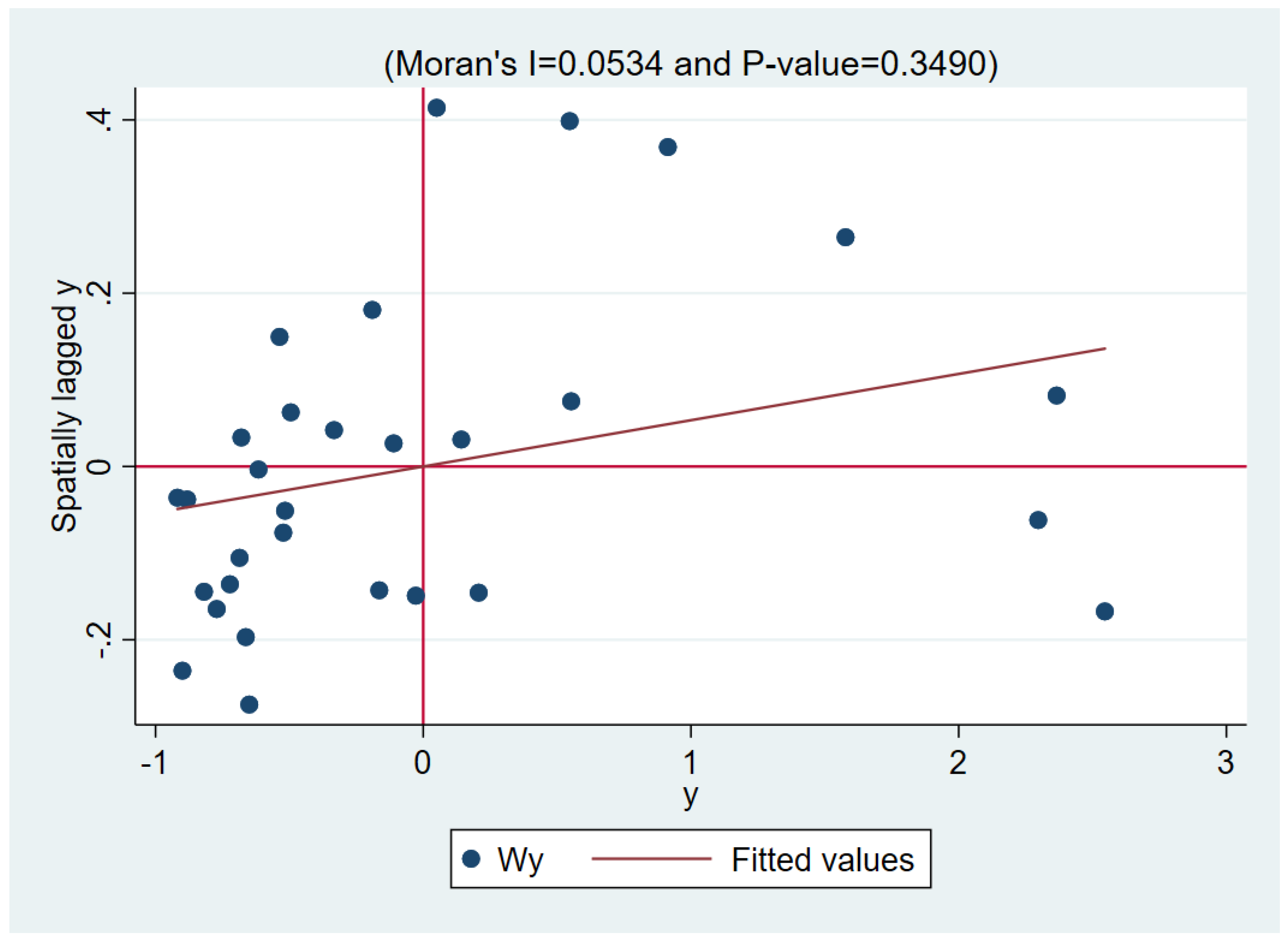
| Primary Variable | Secondary Variable | Resources of Variable |
|---|---|---|
| (X1) Nature of policy | (X1:1) Forecast, (X1:2) Suggest, (X1:3) Supervise, (X1:4) Describe, (X1:5) Feedback, (X1:6) Guide | Ruize Estradama [25] |
| (X2) Prescription of policy | (X2:1) Long term, (X2:2) Medium term, (X2:3) Short term | Ruize Estradama [25] |
| (X3) Field of policy | (X3:1) Environment, (X3:2) Economic, (X3:3) Technology, (X3:4) Politics, (X3:5) Sociology, (X3:6) Others | Zhang and Gen [26]; Mao and Mei [27] |
| (X4) Subject of policy | (X4:1) the State Council, (X4:2) National ministries and commissions, (X4:3) Provincial & municipal prefectural committees, (X4:4) Provincial & municipal departments and bureaus, (X4:5) District committees | Zhang and Zhou [28] |
| (X5) Object of policy | (X5:1) Local governments, (X5:2) S&T service institutions, (X5:3) Consumers | Constructed by authors |
| (X6) Content of policy | (X6:1) Specific objects of S&T services (Purchase content), (X6:2) Purchase mode, (X6:3) Producers of S&T services (Purchase object), (X6:4) Evaluation and supervision | Constructed by authors |
| (X7) Effect level | (X7:1) Law, (X7:2) Administrative regulation, (X7:3) Department rule, (X7:4) Normative document, (X7:5) Industrial stipulation | Dong et al. [29] |
| (X8) Policy tool | (X8:1) Supply type, (X8:2) Demand type, (X8:3) Environment type | Shi et al. [30] |
| (X9) Policy evaluation | (X9:1) Sufficient foundation, (X9:2) Clear objectives, (X9:3) Detailed planning, (X9:4) Scientific scheme | Wang, Yang and Zhang [31] |
| (X10) Function of policy | (X10:1) Standardization and guidance, (X10:2) Institutional constraints, (X10:3) Increasing the supply of S&T services, (X10:4) Encouraging S&T innovation | Constructed by authors |
| Variable | Variable Symbol | Measurement Method |
|---|---|---|
| Regional S&T innovation ability | inno | S&T innovation ability index, which is achieved from “Report of Regional Innovation Ability in China”. |
| GPSTPS policy | pol | PMC index score of GPSTPS policies in each province. |
| Economic level | pgdp | GDP per capita in each province. |
| Degree of marketization | market | Marketization index of each province, which is achieved from “Marketization Index of China’s provinces”. |
| Level of opening up | open | Proportion of the import and export trade of each province to the regional GDP. |
| Human capital | hc | Proportion of population with a college degree or above in each province. |
| Level of R&D investment | rdi | Proportion of R&D expenditure to GDP of each province |
| Urbanization level | urb | Proportion of urban population in each province. |
| Industrial structure | is | Industrial structure hierarchy coefficient in each province. |
| Year | Moran’s I | Z | p | Year | Moran’s I | Z | p |
|---|---|---|---|---|---|---|---|
| 2008 | 0.089 | 3.451 | 0.001 | 2013 | 0.076 | 3.105 | 0.002 |
| 2009 | 0.089 | 3.448 | 0.001 | 2014 | 0.081 | 3.254 | 0.001 |
| 2010 | 0.075 | 3.073 | 0.002 | 2015 | 0.063 | 2.774 | 0.046 |
| 2011 | 0.070 | 2.924 | 0.003 | 2016 | 0.065 | 2.804 | 0.005 |
| 2012 | 0.087 | 3.425 | 0.001 | 2107 | 0.053 | 2.499 | 0.012 |
| Test | Statistic | df | p-Value |
|---|---|---|---|
| Spatial error: | |||
| Moran’s I | 68.691 | 1 | 0.000 |
| Lagrange multiplier | 4.195 | 1 | 0.041 |
| Robust Lagrange multiplier | 4.384 | 1 | 0.036 |
| Spatial lag: | |||
| Lagrange multiplier | 0.004 | 1 | 0.018 |
| Robust Lagrange multiplier | 0.192 | 1 | 0.661 |
| Hypothesis | Likelihood-Ratio Test | p-Value |
|---|---|---|
| SAR nested in SDM | 33.84 | 0.000 |
| SEM nested in SDM | 32.77 | 0.000 |
| Variable | SDM (S&T Innovation Ability) | SLM (S&T Innovation Ability) | SEM (S&T Innovation Ability) |
|---|---|---|---|
| pol | 0.069 | 0.177 | 0.164 |
| pgdp | 0.478 *** | 0.348 *** | 0.311 *** |
| market | 0.129 | 0.206 | 0.132 |
| open | 0.107 *** | 0.132 * | 0.151 *** |
| hc | −0.024 | −0.019 | −0.046 |
| rdi | 0.281 *** | 0.216 *** | 0.234 *** |
| urb | 0.636 ** | 0.512 ** | 0.529 ** |
| is | 0.481 * | 0.761 * | 0.908 * |
| rho | 0.887 *** | 0.568 *** | |
| lambda | 0.726 ** |
| Variables | Eastern Region (S&T Innovation Ability) | Central Region (S&T Innovation Ability) | Western Region (S&T Innovation Ability) |
|---|---|---|---|
| pol | 1.023 ** | 0.826 | 0.629 |
| rho | 0.543 ** | 0.486 ** | 0.224 |
| Control variables | Controlled | Controlled | Controlled |
| Variable | Direct Effect (S&T Innovation Ability) | Indirect Effect (S&T Innovation Ability) | Total Effect (S&T Innovation Ability) | |
|---|---|---|---|---|
| Eastern region | pol | 1.046 ** | 1.421 ** | 2.467 |
| Central region | pol | 0.451 | 0.653 | 1.104 |
| Western region | pol | 0.652 | 0.711 | 1.363 |
Disclaimer/Publisher’s Note: The statements, opinions and data contained in all publications are solely those of the individual author(s) and contributor(s) and not of MDPI and/or the editor(s). MDPI and/or the editor(s) disclaim responsibility for any injury to people or property resulting from any ideas, methods, instructions or products referred to in the content. |
© 2023 by the authors. Licensee MDPI, Basel, Switzerland. This article is an open access article distributed under the terms and conditions of the Creative Commons Attribution (CC BY) license (https://creativecommons.org/licenses/by/4.0/).
Share and Cite
Zhu, D.; Zhang, Y.; Lu, Z. Does Government Purchasing Science and Technology Public Service Promote Regional S&T Innovation Ability? Evidence from China. Sustainability 2023, 15, 2354. https://doi.org/10.3390/su15032354
Zhu D, Zhang Y, Lu Z. Does Government Purchasing Science and Technology Public Service Promote Regional S&T Innovation Ability? Evidence from China. Sustainability. 2023; 15(3):2354. https://doi.org/10.3390/su15032354
Chicago/Turabian StyleZhu, Dongdan, Yuting Zhang, and Zhengnan Lu. 2023. "Does Government Purchasing Science and Technology Public Service Promote Regional S&T Innovation Ability? Evidence from China" Sustainability 15, no. 3: 2354. https://doi.org/10.3390/su15032354
APA StyleZhu, D., Zhang, Y., & Lu, Z. (2023). Does Government Purchasing Science and Technology Public Service Promote Regional S&T Innovation Ability? Evidence from China. Sustainability, 15(3), 2354. https://doi.org/10.3390/su15032354




